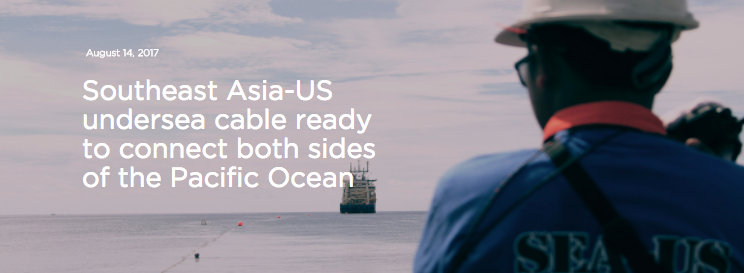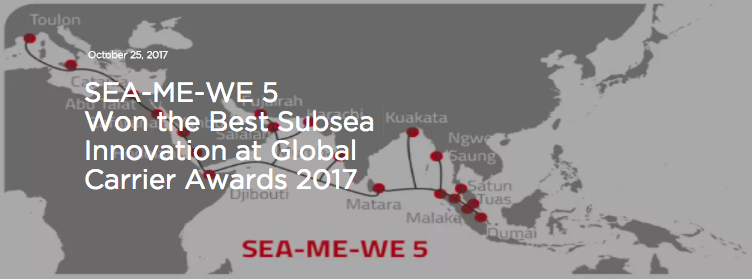
14 August 2017
Southeast Asia-US undersea cable ready to connect both sides of the Pacific Ocean
Jakarta., 14 August 2017 – Submarine cables in a highly seismic zone like Southeast Asia and East Asia are prone to damage due to earthquakes. While some damages are minor following low-magnitude earthquakes and can be quickly repaired, there were times when strong earthquakes occurred, causing massive network outages and huge financial losses. At least there were two major earthquakes in Asia in the past decade that heavily disrupted communications networks. The 6.7-magnitude earthquake that struck offshore Taiwan in 2006 cut several major cables and caused massive network outages in Taiwan, Singapore, South Korea, Hong Kong, and Japan. Taiwan's biggest phone company, was reported to have suffered about $3 million revenue losses and the company had said it would have to spend about $1.53 million to repair the cables. Another major network disruption occurred in March 2011 after a 9.0-magnitude quake and an ensuing tsunami struck Japan, which damaged about half of the trans-Pacific undersea cables.
Telin, a subsidiary of Indonesia's state-owned telecommunications and network service provider Telkom, along with five other international telecommunications operators, on their efforts on preventing this from happening again and to provide a seamless and better connection to send data, voice, and video across the Pacific Ocean, they have laid out submarine cables network routes that avoid three hazardous, disaster-prone areas, namely South China Sea, Luzon Strait and Japan.
The submarine cable system, known as Southeast Asia-United States (SEA-US) cable, lies between Southeast Asia and the United States and bridges five areas and territories across the Pacific; Manado in Indonesia, Davao in Southern Philippines, Piti in the territory of Guam, Makaha in Hawaii, and Hermosa Beach California in mainland US.
The roughly 15,400 km cables will directly connect Southeast Asia from Manado in Indonesia, to the United States in Los Angeles, California and it will be the first trans-Pacific cable system that has 20Tbps capacity using 100Gpbs technology from NEC and has adapted a wavelength technology, which enhances speed and quality.
The cable will also improve communications system with a state-of-the-art 100G technology, thus providing users with seamless and better communications experience.
Users will experience the lowest time delay from Indonesia to US at 160 ms by using this cable system, compared to 210 ms if they use the existing route. It is a fitting response to meet the market demand since it can accommodate 70 percent of total US-bound communication traffic that originate in Southeast Asia.
Telin’s SEA-US cable also offers its users more advantage with direct link to countries in Western Europe, Middle East and Central Asia as the cable would be directly interconnected to Telin’s Western Europe, Middle East and Southeast Asia (SEA-ME-WE 5) network. The network provides route diversity to 17 countries from France and Italy in Western Europe and goes eastward via North Africa, Middle East, Central Asia, and Southeast Asia in Singapore. From there, it will be connected to the SEA-US cable system through the backbone highway, Indonesia Global Gateway system, as the main networking hub that stretches across the Indonesian archipelago.
The integration of these three undersea cable systems will create a competitive global network that benefits users with a real time data bandwidth connection to deliver mission-critical applications including data, voice and video. More importantly, it places Southeast Asia at the center of these cable systems, thus emphasising the region’s importance for both sides of the world - Western Europe to the west and US to the east – in this integrated, global communications network.
The cable is now on pre-sale and Telin will officially launch it in August. The consortium investing in the SEA-US undersea cable project consists of Telin of Indonesia, Globe Telecom of the Philippines, GTA of Guam, Hawaiian Telcom, and RTI of California.


